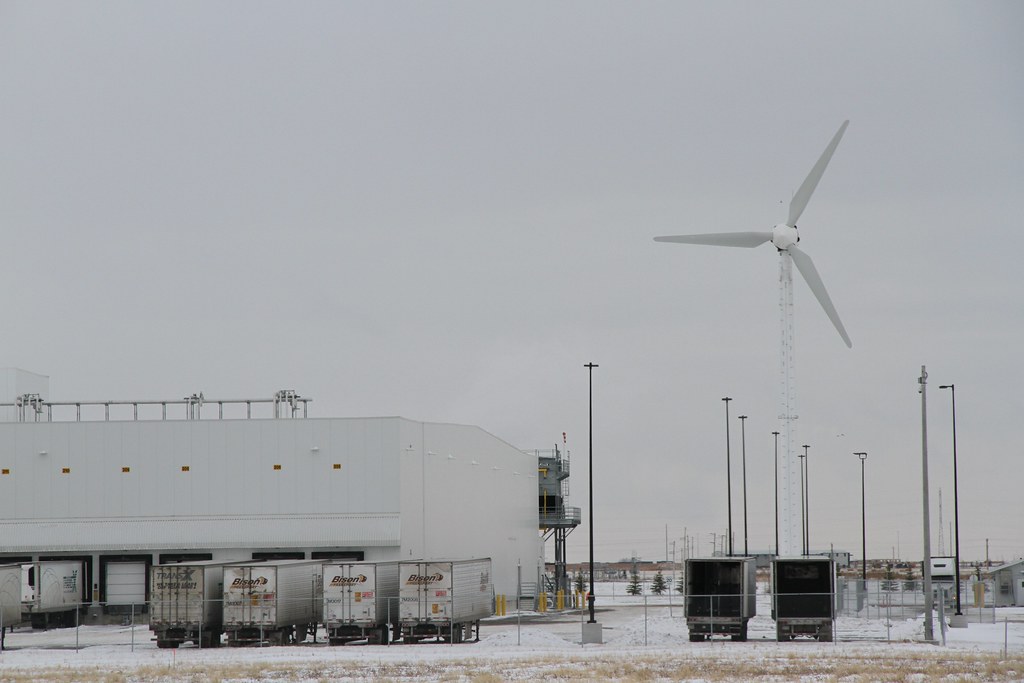Refrigerated warehouses are essential for preserving perishable goods, but they are also among the most energy-intensive facilities. Improving energy efficiency in these warehouses can significantly reduce operating costs and environmental impact. This article provides practical energy efficiency tips for refrigerated warehouses, focusing on strategies that optimize energy use while maintaining the necessary conditions for stored products.
- Optimize Temperature Set Points
1.1 Appropriate Temperature Ranges
- Product-Specific Temperatures: Set temperature ranges according to the specific needs of the products being stored. Avoid overcooling, which wastes energy without benefiting product quality.
- Seasonal Adjustments: Adjust temperature set points based on seasonal variations and external weather conditions to optimize energy use.
1.2 Differential Set Points
- Staggered Cooling: Implement differential set points for different zones within the warehouse to ensure only the necessary areas are cooled to the lowest temperatures required.
- Zone Monitoring: Use sensors to monitor and adjust temperatures in real-time, ensuring optimal conditions without excess energy consumption.
- Enhance Insulation
2.1 High-Quality Insulation Materials
- Wall and Roof Insulation: Invest in high-quality insulation materials for walls and roofs to minimize heat transfer and reduce the load on refrigeration systems.
- Floor Insulation: Properly insulate the floors to prevent heat gain from the ground, especially in older facilities.
2.2 Regular Maintenance
- Inspect for Gaps: Regularly inspect doors, windows, and walls for gaps or cracks that can lead to air leaks. Seal any openings promptly to maintain a consistent internal temperature.
- Maintain Door Seals: Ensure door seals are in good condition and replace them if they become worn or damaged.
- Upgrade Refrigeration Systems
3.1 Energy-Efficient Compressors
- Variable Speed Compressors: Use variable speed compressors that adjust their operation based on demand, which can significantly reduce energy consumption.
- High-Efficiency Units: Upgrade to high-efficiency refrigeration units that offer better performance and lower energy use.
3.2 Advanced Refrigerants
- Low GWP Refrigerants: Use refrigerants with low Global Warming Potential (GWP) to reduce environmental impact and improve system efficiency.
- Natural Refrigerants: Consider using natural refrigerants like ammonia or carbon dioxide, which can be more efficient and environmentally friendly.
- Implement Advanced Monitoring and Control Systems
4.1 IoT Sensors
- Real-Time Monitoring: Deploy IoT sensors to monitor temperature, humidity, and energy consumption in real-time, providing data for optimizing operations.
- Automated Controls: Use automated control systems to adjust cooling and lighting based on real-time data, ensuring optimal conditions with minimal energy use.
4.2 Energy Management Systems
- Centralized Control: Implement centralized energy management systems to monitor and control all energy-consuming equipment, ensuring coordinated and efficient operation.
- Predictive Maintenance: Use predictive analytics to anticipate maintenance needs and prevent equipment failures, which can lead to energy inefficiencies.
- Optimize Lighting
5.1 LED Lighting
- Energy-Efficient Bulbs: Replace traditional lighting with LED bulbs, which consume less energy and generate less heat, reducing the load on cooling systems.
- Motion Sensors: Install motion sensors to ensure lights are only on when needed, particularly in low-traffic areas.
5.2 Natural Light Utilization
- Skylights and Windows: Incorporate skylights and windows to maximize the use of natural light during the day, reducing the need for artificial lighting.
- Light Reflectors: Use light reflectors and diffusers to distribute natural and artificial light more effectively, reducing the number of light fixtures needed.
- Regular Maintenance and Upkeep
6.1 Equipment Maintenance
- Clean and Service Regularly: Regularly clean and service refrigeration and HVAC equipment to ensure they operate at peak efficiency.
- Filter Replacement: Replace air filters frequently to maintain proper airflow and reduce strain on cooling systems.
6.2 Structural Maintenance
- Inspect Insulation: Regularly inspect and maintain insulation to ensure it remains effective.
- Roof and Wall Integrity: Ensure the structural integrity of roofs and walls to prevent heat ingress and maintain optimal insulation.
- Employee Training and Engagement
7.1 Energy Efficiency Training
- Best Practices: Train employees on best practices for energy efficiency, such as minimizing door openings and reporting maintenance issues promptly.
- Operational Procedures: Develop and enforce operational procedures that support energy efficiency, such as keeping doors closed and turning off lights in unoccupied areas.
7.2 Incentivize Energy Savings
- Reward Programs: Implement reward programs to incentivize employees to identify and implement energy-saving measures.
- Feedback Systems: Encourage feedback from staff on ways to improve energy efficiency, fostering a culture of continuous improvement.
Improving energy efficiency in refrigerated warehouses not only reduces operational costs but also contributes to environmental sustainability. By optimizing temperature set points, enhancing insulation, upgrading refrigeration systems, implementing advanced monitoring and control systems, optimizing lighting, maintaining equipment regularly, and engaging employees, warehouses can achieve significant energy savings. These strategies ensure that refrigerated warehouses operate efficiently while maintaining the necessary conditions for preserving the quality and safety of stored goods. As energy costs continue to rise, investing in energy efficiency measures will be increasingly important for the long-term success and sustainability of refrigerated warehousing operations.


 Dave McGowan has been a member of the WEL Family since May 1989. He is a husband and father of two children. Dave is also a U.S. Army veteran and served in Vietnam in 1971-1972, and he attended driving school soon after he was released from the military in 1974.
Dave McGowan has been a member of the WEL Family since May 1989. He is a husband and father of two children. Dave is also a U.S. Army veteran and served in Vietnam in 1971-1972, and he attended driving school soon after he was released from the military in 1974. During his career with WEL, Phil has worked as a driver, dispatcher, terminal manager and customer service manager. He says he always was a driver first, though non-driving jobs taught him financial management that helps him as an owner-operator.
During his career with WEL, Phil has worked as a driver, dispatcher, terminal manager and customer service manager. He says he always was a driver first, though non-driving jobs taught him financial management that helps him as an owner-operator.